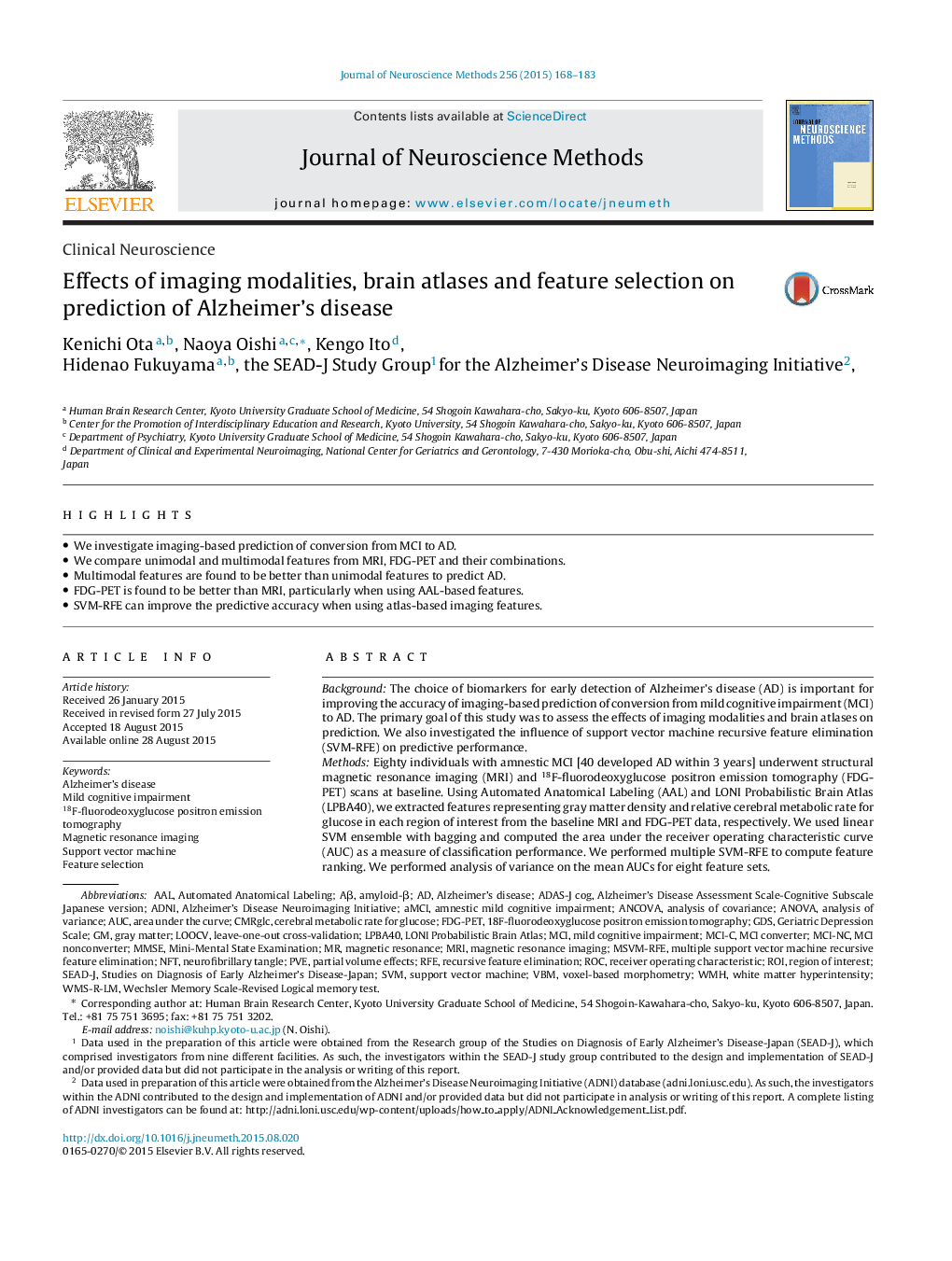| کد مقاله | کد نشریه | سال انتشار | مقاله انگلیسی | نسخه تمام متن |
|---|---|---|---|---|
| 6268144 | 1614613 | 2015 | 16 صفحه PDF | دانلود رایگان |
- We investigate imaging-based prediction of conversion from MCI to AD.
- We compare unimodal and multimodal features from MRI, FDG-PET and their combinations.
- Multimodal features are found to be better than unimodal features to predict AD.
- FDG-PET is found to be better than MRI, particularly when using AAL-based features.
- SVM-RFE can improve the predictive accuracy when using atlas-based imaging features.
BackgroundThe choice of biomarkers for early detection of Alzheimer's disease (AD) is important for improving the accuracy of imaging-based prediction of conversion from mild cognitive impairment (MCI) to AD. The primary goal of this study was to assess the effects of imaging modalities and brain atlases on prediction. We also investigated the influence of support vector machine recursive feature elimination (SVM-RFE) on predictive performance.MethodsEighty individuals with amnestic MCI [40 developed AD within 3 years] underwent structural magnetic resonance imaging (MRI) and 18F-fluorodeoxyglucose positron emission tomography (FDG-PET) scans at baseline. Using Automated Anatomical Labeling (AAL) and LONI Probabilistic Brain Atlas (LPBA40), we extracted features representing gray matter density and relative cerebral metabolic rate for glucose in each region of interest from the baseline MRI and FDG-PET data, respectively. We used linear SVM ensemble with bagging and computed the area under the receiver operating characteristic curve (AUC) as a measure of classification performance. We performed multiple SVM-RFE to compute feature ranking. We performed analysis of variance on the mean AUCs for eight feature sets.ResultsThe interactions between atlas and modality choices were significant. The main effect of SVM-RFE was significant, but the interactions with the other factors were not significant.Comparison with existing methodMultimodal features were found to be better than unimodal features to predict AD. FDG-PET was found to be better than MRI.ConclusionsImaging modalities and brain atlases interact with each other and affect prediction. SVM-RFE can improve the predictive accuracy when using atlas-based features.
Journal: Journal of Neuroscience Methods - Volume 256, 30 December 2015, Pages 168-183
